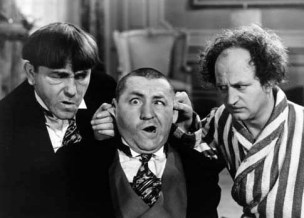The Situation of Judging – Part I
Posted by The Situationist Staff on July 25, 2007
 On Monday, Former Supreme Court Justice Sandra Day O’Connor spoke at the National Governors Association Conference (held in beautiful Traverse City, Michigan). She called on the state executives to help do something to protect and reinforce judicial independence. “Judicial independence does not happen all by itself,” she said. “It’s tremendously hard to create and easier than most people imagine to damage or destroy.”
On Monday, Former Supreme Court Justice Sandra Day O’Connor spoke at the National Governors Association Conference (held in beautiful Traverse City, Michigan). She called on the state executives to help do something to protect and reinforce judicial independence. “Judicial independence does not happen all by itself,” she said. “It’s tremendously hard to create and easier than most people imagine to damage or destroy.”
This is a cause that Justice O’Connor has championed for years — not just for U.S. courts but also for the courts of other nations. Independent Judges, she has argued, are going to disappoint and anger some people or some institutions almost all of the time. Some of those individuals or entities will be very powerful. Lest the judges wind up serving the powerful, judicial independence is necessary. As O’Connor once put it: “We have the power to make the president or Congress really, really angry. . . . In fact, if we do not make them mad some of the time, we probably aren’t doing our jobs. Our effectiveness, therefore, relies on the knowledge that we won’t be subject to retaliation for our acts.”
At yesterday’s conference, the former justice indicated that the solution was in education — in teaching American kids to respect the judiciary. She pointed out that, according to some surveys, more young people can name the three stooges than can name the three branches of the federal government.
 No doubt, improving our education system is in order. Our own sense, however, is that the troubles are deeper than educational; they are situational (and we suspect that Justice O’Connor would agree).
No doubt, improving our education system is in order. Our own sense, however, is that the troubles are deeper than educational; they are situational (and we suspect that Justice O’Connor would agree).
In 2006, Situationist contributors Jon Hanson and Adam Benforado wrote an article, “The Drifters” for the Boston Review. In broadest terms, the essay’s thesis was that the situation of judging matters. One point it made was that the methods by which judges take the bench, or maintain their position on it, influences what and how they judge:
For example, . . . . most judges on state courts—which handle the vast majority of America’s judicial traffic—are elected, which leaves them more vulnerable to external influence than federal judges. As the legal historian Jed Shugerman has written, “Judicial elections clash with the basic—and perhaps naive—notion that judges are supposed to interpret the law and pursue justice, regardless of party or public opinion.” Instead, they have “injected popular and partisan politics into legal deliberations” since “the slavery debates and the class struggles of the nineteenth century.”
* * *
There is also recent evidence that state courts to which judges are elected rather than appointed have been powerfully transformed by campaign financing. A study by Texans for Public Justice, for example, found that the ten Texas Supreme Court justices elected or reelected between 1994 and 1998 raised over half of their $12.8 million in campaign money “from lawyers, law firms and litigants who filed appeals with the high court during this same period.” The study also found that, although the Texas Supreme Court declines to hear nearly 90 percent of the cases for which appeal petitions are filed, “the more money that a petitioner contributed to the justices, the more likely they were to accept a given petition.” For example, the court was ten times more likely to accept the petitions from petitioners who made campaign contributions of more than $250,000 than they were of those of non-contributing petitioners. Trends in decisions have also shifted over the same time period decidedly in favor of corporate defendants, and it seems likely that a major factor in that drift is the lack of the same independence-bolstering structures enjoyed by judges in the federal system.
If the states want to do something to enhance judicial independence, they might begin by revisiting the process by which their judges obtain their robes.
For a PBS Frontline website on “Justice for Sale,” click here. To download the “New Politics for Judicial Elections Report for 2006,” by the Justice at Stake Campaign, click here. For an NPR interview (audio) of Justice O’Connor about judicial independence by Nina Totenberg, click here. For a PBS interview (transcript, audio, or streaming video) of Justices O’Connor and Breyer on the topic of judicial independence, click here.


















The Situation of Judging - Part II « The Situationist said
[…] by The Situationist Staff on August 13th, 2007 In late July, we posted about former Supreme Court Justice Sandra Day O’Connor’s remarks at the National Governors […]